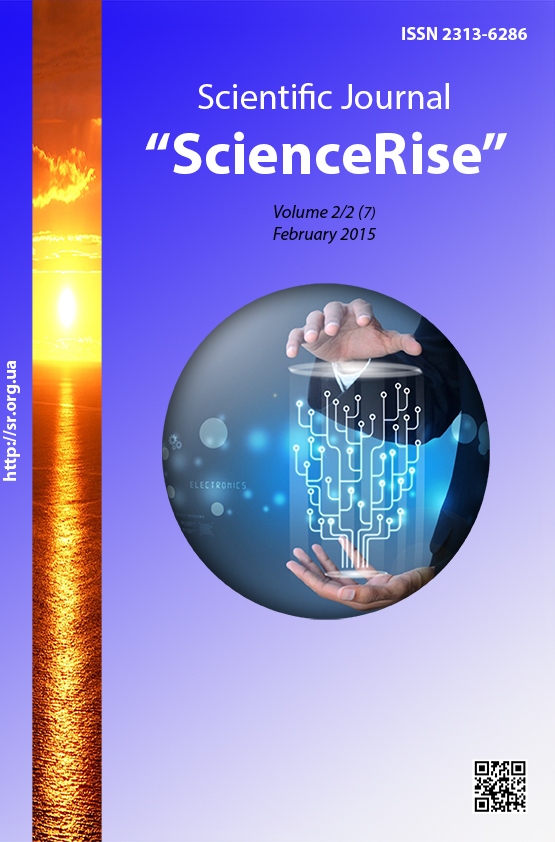Estimation of thermal aerodynamic efficiency of single pipes with different cross-section
DOI:
https://doi.org/10.15587/2313-8416.2015.37446Keywords:
pipe, cam shaped, plane-oval, circular, heat transfer, aerodynamics, comparison, efficiencyAbstract
Comparative evaluation of thermal efficiency of single pipes with drop-shaped, plane-oval and circular forms of section at transversal flowing around in interval of Reynolds numbers ReD=3000...30000 is performed. For an evaluation and comparison of efficiency of pipes the modified specific friction loss coefficient was used, which takes into account an increase or decrease of area of surface of the compared tubes. Advantages and disadvantages of compared pipes are shown
References
Antuf’ev, V. M. (1966). Efficiency of different forms of heating convective surfaces. Moskow, USSR: Energy, 184.
Udin, V. F. (1982). Heat transfer of finned tubes in crossflow. Leningrad, USSR: Machinebuilding, 189.
Kalafati, D. D., Popalov, V. V. (1986). Optimization on efficiency of heat exchange. Moscow, USSR: Energoatomizdat, 152.
Kalinin, E. K., Dreytser, H. A., Yarkho, S. A. (1990). Intensification of Heat transfer in the ductings. Moscow, USSR: Machinebuild, 208.
Gukhman, A. A. (1977). Intensification of convective heat transfer and problem of comparative estimation of heat-exchange surfaces. Thermal Engineering, 4, 5–8.
Dreytser, G. A., Dzyubenko, B. V., Yakimenko, R. I. (1998). Intensification of heat transfer and analysis methods of comparison of heat hydraulic efficiency for heat transfer surfaces. Intensification of heat transfer: Labours of the II Russian national conference of a heat transfer. Мoscow, Russia: Publishing house MEI, 6, 99–102.
Khalatov, A. A. (2005). Heat exchange and hydrodynamics near the surface of deepenings (small holes), Kiev, Ukraine: Publ. Inst. Tekhnical Thermalphysics NAS Ukraine, 140.
Donik, T. V., Khalatov, A. A. (2012). Thermhydraulic efficiency of heat exchange and the quality of intensifiers such as torsional. Eastern-European Journal of Enterprise Technologies, 3/10 (57), 43–46. Available at: http://journals.uran.ua/eejet/article/view/1687/1584
Wang, B. G., Ji, H. H. (1987). An experimental investigation of heat transfer and friction loss in taper pin fin configuration of air cooled turbine blades. Proceding of the ASME-JSME Thermal Engineering Joint Conference, 4, 127–133.
Uzol, O., Camci, C. (2001). Elliptical Pin Fins as an Alternative to Circular Pin Fins for Gas Turbine Blade Cooling Applications Part 1: Endwall Heat Transfer and Total Pressure Loss Characteristics. Proceedings of ASME Turbo Expo 2001 International Gas Turbine Institute Conference, New Orleans, LA, 13. doi: 10.1115/2001-gt-0180
State Standard 8638-57 (1994). Drop shaped steel tubes. Reediting, january 1971, december 1993, Moskow, USSR: publishing house of standards.
Terekh, A. M., Semenyako, A. V., Rudenko, A. I., Kondratyuk, V. A. (2014). Heat transfer of a single drop shaped cylinders in cross flow. Eastern-European Journal of Enterprise Technologies, 1/8(67), 27–31. http://journals.uran.ua/eejet/article/view/20066/19035
Terekh, A. M., Rudenko, A. I., Zhukova, Yu. V. (2013). Aerodynamic drag to flows about drop-like tubes and visualization of these flows. Journal of Engineering Physics and Thermophysics, 86 (2), 376–384. doi: 10.1007/s10891-013-0844-9
Dyban, Yu. P., Yushina, L. E. (1982). Heat transfer of cylinder of finite length. Industrial heat engineering, 4 (5), 3–8.
Downloads
Published
Issue
Section
License
Copyright (c) 2015 Олександр Ігоревич Руденко, Олександр Михайлович Терех, Валерій Омелянович Туз, Валерій Андрійович Рогачов, Вадим Анатолійович Кондратюк

This work is licensed under a Creative Commons Attribution 4.0 International License.
Our journal abides by the Creative Commons CC BY copyright rights and permissions for open access journals.
Authors, who are published in this journal, agree to the following conditions:
1. The authors reserve the right to authorship of the work and pass the first publication right of this work to the journal under the terms of a Creative Commons CC BY, which allows others to freely distribute the published research with the obligatory reference to the authors of the original work and the first publication of the work in this journal.
2. The authors have the right to conclude separate supplement agreements that relate to non-exclusive work distribution in the form in which it has been published by the journal (for example, to upload the work to the online storage of the journal or publish it as part of a monograph), provided that the reference to the first publication of the work in this journal is included.

